Chrysler 2009 Annual Report Download - page 133
Download and view the complete annual report
Please find page 133 of the 2009 Chrysler annual report below. You can navigate through the pages in the report by either clicking on the pages listed below, or by using the keyword search tool below to find specific information within the annual report.-
 1
1 -
 2
2 -
 3
3 -
 4
4 -
 5
5 -
 6
6 -
 7
7 -
 8
8 -
 9
9 -
 10
10 -
 11
11 -
 12
12 -
 13
13 -
 14
14 -
 15
15 -
 16
16 -
 17
17 -
 18
18 -
 19
19 -
 20
20 -
 21
21 -
 22
22 -
 23
23 -
 24
24 -
 25
25 -
 26
26 -
 27
27 -
 28
28 -
 29
29 -
 30
30 -
 31
31 -
 32
32 -
 33
33 -
 34
34 -
 35
35 -
 36
36 -
 37
37 -
 38
38 -
 39
39 -
 40
40 -
 41
41 -
 42
42 -
 43
43 -
 44
44 -
 45
45 -
 46
46 -
 47
47 -
 48
48 -
 49
49 -
 50
50 -
 51
51 -
 52
52 -
 53
53 -
 54
54 -
 55
55 -
 56
56 -
 57
57 -
 58
58 -
 59
59 -
 60
60 -
 61
61 -
 62
62 -
 63
63 -
 64
64 -
 65
65 -
 66
66 -
 67
67 -
 68
68 -
 69
69 -
 70
70 -
 71
71 -
 72
72 -
 73
73 -
 74
74 -
 75
75 -
 76
76 -
 77
77 -
 78
78 -
 79
79 -
 80
80 -
 81
81 -
 82
82 -
 83
83 -
 84
84 -
 85
85 -
 86
86 -
 87
87 -
 88
88 -
 89
89 -
 90
90 -
 91
91 -
 92
92 -
 93
93 -
 94
94 -
 95
95 -
 96
96 -
 97
97 -
 98
98 -
 99
99 -
 100
100 -
 101
101 -
 102
102 -
 103
103 -
 104
104 -
 105
105 -
 106
106 -
 107
107 -
 108
108 -
 109
109 -
 110
110 -
 111
111 -
 112
112 -
 113
113 -
 114
114 -
 115
115 -
 116
116 -
 117
117 -
 118
118 -
 119
119 -
 120
120 -
 121
121 -
 122
122 -
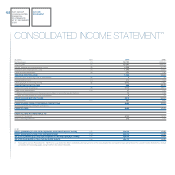 123
123 -
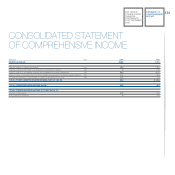 124
124 -
 125
125 -
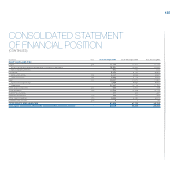 126
126 -
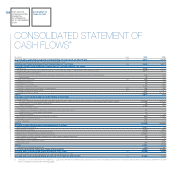 127
127 -
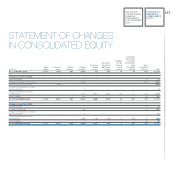 128
128 -
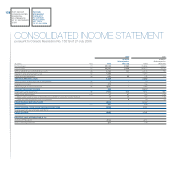 129
129 -
 130
130 -
 131
131 -
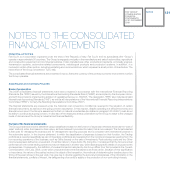 132
132 -
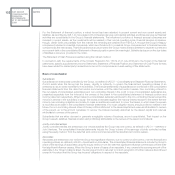 133
133 -
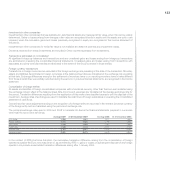 134
134 -
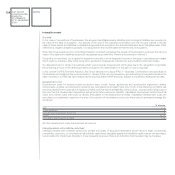 135
135 -
 136
136 -
 137
137 -
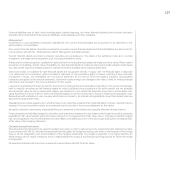 138
138 -
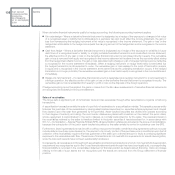 139
139 -
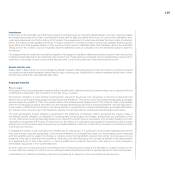 140
140 -
 141
141 -
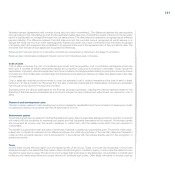 142
142 -
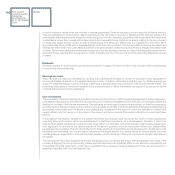 143
143 -
 144
144 -
 145
145 -
 146
146 -
 147
147 -
 148
148 -
 149
149 -
 150
150 -
 151
151 -
 152
152 -
 153
153 -
 154
154 -
 155
155 -
 156
156 -
 157
157 -
 158
158 -
 159
159 -
 160
160 -
 161
161 -
 162
162 -
 163
163 -
 164
164 -
 165
165 -
 166
166 -
 167
167 -
 168
168 -
 169
169 -
 170
170 -
 171
171 -
 172
172 -
 173
173 -
 174
174 -
 175
175 -
 176
176 -
 177
177 -
 178
178 -
 179
179 -
 180
180 -
 181
181 -
 182
182 -
 183
183 -
 184
184 -
 185
185 -
 186
186 -
 187
187 -
 188
188 -
 189
189 -
 190
190 -
 191
191 -
 192
192 -
 193
193 -
 194
194 -
 195
195 -
 196
196 -
 197
197 -
 198
198 -
 199
199 -
 200
200 -
 201
201 -
 202
202 -
 203
203 -
 204
204 -
 205
205 -
 206
206 -
 207
207 -
 208
208 -
 209
209 -
 210
210 -
 211
211 -
 212
212 -
 213
213 -
 214
214 -
 215
215 -
 216
216 -
 217
217 -
 218
218 -
 219
219 -
 220
220 -
 221
221 -
 222
222 -
 223
223 -
 224
224 -
 225
225 -
 226
226 -
 227
227 -
 228
228 -
 229
229 -
 230
230 -
 231
231 -
 232
232 -
 233
233 -
 234
234 -
 235
235 -
 236
236 -
 237
237 -
 238
238 -
 239
239 -
 240
240 -
 241
241 -
 242
242 -
 243
243 -
 244
244 -
 245
245 -
 246
246 -
 247
247 -
 248
248 -
 249
249 -
 250
250 -
 251
251 -
 252
252 -
 253
253 -
 254
254 -
 255
255 -
 256
256 -
 257
257 -
 258
258 -
 259
259 -
 260
260 -
 261
261 -
 262
262 -
 263
263 -
 264
264 -
 265
265 -
 266
266 -
 267
267 -
 268
268 -
 269
269 -
 270
270 -
 271
271 -
 272
272 -
 273
273 -
 274
274 -
 275
275 -
 276
276 -
 277
277 -
 278
278 -
 279
279 -
 280
280 -
 281
281 -
 282
282 -
 283
283 -
 284
284 -
 285
285 -
 286
286 -
 287
287 -
 288
288 -
 289
289 -
 290
290 -
 291
291 -
 292
292 -
 293
293 -
 294
294 -
 295
295 -
 296
296 -
 297
297 -
 298
298 -
 299
299 -
 300
300 -
 301
301 -
 302
302 -
 303
303 -
 304
304 -
 305
305 -
 306
306 -
 307
307 -
 308
308 -
 309
309 -
 310
310 -
 311
311 -
 312
312 -
 313
313 -
 314
314 -
 315
315 -
 316
316 -
 317
317 -
 318
318 -
 319
319 -
 320
320 -
 321
321 -
 322
322 -
 323
323 -
 324
324 -
 325
325 -
 326
326 -
 327
327 -
 328
328 -
 329
329 -
 330
330 -
 331
331 -
 332
332 -
 333
333 -
 334
334 -
 335
335 -
 336
336 -
 337
337 -
 338
338 -
 339
339 -
 340
340 -
 341
341 -
 342
342 -
 343
343 -
 344
344 -
 345
345 -
 346
346 -
 347
347 -
 348
348 -
 349
349 -
 350
350 -
 351
351 -
 352
352 -
 353
353 -
 354
354 -
 355
355 -
 356
356 -
 357
357 -
 358
358 -
 359
359 -
 360
360 -
 361
361 -
 362
362 -
 363
363 -
 364
364 -
 365
365 -
 366
366 -
 367
367 -
 368
368 -
 369
369 -
 370
370 -
 371
371 -
 372
372 -
 373
373 -
 374
374
 |
 |

132 FIAT GROUP
CONSOLIDATED
FINANCIAL
STATEMENTS
AT 31 DECEMBER
2009
NOTES
For the Statement of financial position, a mixed format has been selected to present current and non-current assets and
liabilities, as permitted by IAS 1. In more detail, both companies carrying out industrial activities and those carrying out financial
activities are consolidated in the Group’s financial statements. The investment portfolios of financial services companies are
included in current assets, as the investments will be realised in their normal operating cycle. Financial services companies,
though, obtain funds only partially from the market: the remaining are obtained from Fiat S.p.A. through the Group’s treasury
companies (included in industrial companies), which lend funds both to industrial Group companies and to financial services
companies as the need arises. This financial service structure within the Group means that any attempt to separate current and
non-current debt in the consolidated Statement of financial position cannot be meaningful. Suitable disclosure on the due dates
of liabilities is moreover provided in the notes.
The Statement of Cash Flows is presented using the indirect method.
In connection with the requirements of the Consob Resolution No. 15519 of 27 July 2006 as to the format of the financial
statements, specific supplementary Income Statement, Statement of Financial Position and Statement of Cash Flows formats
have been added for related party transactions so as not to compromise an overall reading of the statements.
Basis of consolidation
Subsidiaries
Subsidiaries are enterprises controlled by the Group, as defined in IAS 27 – Consolidated and Separate Financial Statements.
Control exists when the Group has the power, directly or indirectly, to govern the financial and operating policies of an
enterprise so as to obtain benefits from its activities. The financial statements of subsidiaries are combined in the consolidated
financial statements from the date that control commences until the date that control ceases. Non-controlling interest in
the net assets of consolidated subsidiaries and non-controlling interest in the profit or loss of consolidated subsidiaries are
presented separately from the interest of the owners of the parent in the consolidated statement of financial position and
income statement respectively. When losses in a consolidated subsidiary attributed to the non-controlling interest exceed the
minority’s interest in the subsidiary’s equity, the excess is allocated against the majority interest except to the extent that the
minority has a binding obligation and is able to make an additional investment to cover the losses, in which case the excess
is recorded as an asset in the consolidated financial statements. If no such obligation exists, should profits be realised in the
future, the non-controlling interest share of those profits is attributed to the issued capital and reserves attributable to owners
of the parent, up to the amount necessary to recover the losses previously absorbed by the issued capital and reserves
attributable to owners of the parent.
Subsidiaries that are either dormant or generate a negligible volume of business, are not consolidated. Their impact on the
Group’s assets, liabilities, financial position and profit/(loss) attributable to the owners of the parent is immaterial.
Jointly controlled entities
Jointly controlled entities are enterprises over whose activities the Group has joint control, as defined in IAS 31 – Interests in
Joint Ventures. The consolidated financial statements include the Group’s share of the earnings of jointly controlled entities
using the equity method, from the date that joint control commences until the date that joint control ceases.
Associates
Associates are enterprises over which the Group has significant influence, but no control or joint control, over the financial and
operating policies, as defined in IAS 28 – Investments in Associates. The consolidated financial statements include the Group’s
share of the earnings of associates using the equity method, from the date that significant influence commences until the date
that significant influence ceases. When the Group’s share of losses of an associate, if any, exceeds the carrying amount of the
associate in the Group’s balance sheet, the carrying amount is reduced to nil and recognition of further losses is discontinued
except to the extent that the Group has incurred obligations in respect of the associate.
